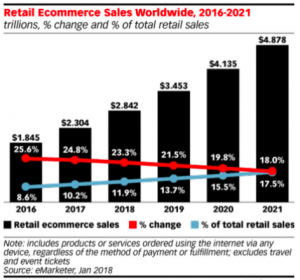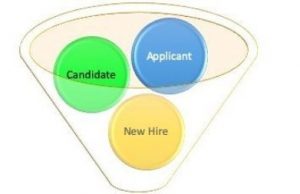 Is artificial intelligence, digital marketing, predictive analytics, customer engagement, big data, or some other “shiny object” the key to driving business performance? Certainly all of these endeavors can make a difference in revenue growth. Yet there is a bigger picture. None of these is standalone in what’s required to sustain revenue growth, and they may or may not be big influencers of profit growth.
Is artificial intelligence, digital marketing, predictive analytics, customer engagement, big data, or some other “shiny object” the key to driving business performance? Certainly all of these endeavors can make a difference in revenue growth. Yet there is a bigger picture. None of these is standalone in what’s required to sustain revenue growth, and they may or may not be big influencers of profit growth.
Research of 10,000 companies across 25 years proved that a strong customer culture drives business performance in over 35 performance measures, including ROI, growth, customer retention, market share and sales.1
When you think about it, that makes a lot of sense:
- 40-70% of customers switch loyalty due to a perceived attitude of indifference
- 91% of companies claim to be customer-focused, yet only 10% of customers agree2
Surely you’re asking: how can something like strong customer culture be quantified? Answer: the 35 performance measures mentioned above can be distilled into 3 pivotal factors — (1) Customer Insight & Foresight, (2) Competitor Insight & Foresight, (3) Peripheral Vision.
As you explore the following descriptions of these 3 monumental factors, consider the degree to which they are embraced in your organization’s strategy.
1) Customer Insight & Foresight
The extent to which employees — at any and every level and in any and every function — monitor, understand, and act on (a) current customer needs and satisfaction and (b) potential customer needs and opportunities.
As the ultimate source of salaries, budgets and dividends, customers make the world go ’round. So it makes sense that being attuned to customers, through and through, is a massive driver of business performance.
Bad habits in organizations of any kind excuse certain roles from paying attention to the ripple-effect they have on customers, or at least, to their impact on those who serve customers. Poor traditions allow weak accountability for acting on customer needs. Inside-out thinking creates silos of many kinds that get in the way of maturity in this factor, and of business performance overall.
2) Competitor Insight & Foresight
The extent to which employees — at any and every level and in any and every function — monitor, understand, and respond to (a) competitor strengths and weaknesses and (b) new market entrants and potential competitors.
As the contextual realities of customers’ spending choices, your competitors (along with you) shape customers’ expectations. So it’s logical that being astute about competitors, in all you do, is a substantial driver of business performance.
Silo-ization of competitor insight to functions such as strategic planning, business intelligence, product marketing and research and development hamper your organizational mojo competitively. Standing in your customers’ shoes to gain their perspective of your competitors can influence every job level and functional area in setting appropriate performance standards for themselves. It’s especially effective to see competitors from the standpoint of different customer segments/personas. This can be instrumental in driving business performance overall.
3) Peripheral Vision
The extent to which employees — at any and every level and in any and every function — monitor, understand, and respond to trends in the larger environment (political, economic, social and technical).
Context is essential for the success of most things in life. In some countries, it’s more natural for employees at all levels to be ever aware of context, while in other countries we need to train ourselves to think about the “concentric circles” around what we do. Being in-tune — or out of tune — with the larger environment in our thinking and doing is an obvious driver of business performance.
Peripheral vision is hampered by silos — organization silos, process silos, data silos, etc. It is weak when any of us take our job for granted, as an end in itself, rather than as a cog in a bigger wheel. Adaptability of the organization (i.e. agility) in the context of evolving external forces is certainly fundamental to driving business performance overall.
Foundational Levers
The 3 pivotal factors of business performance outlined above are internally enabled (or thwarted) by 3 foundational levers:
(A) Cross-Functional Collaboration: The extent to which employees interact, share information, work with, and assist colleagues from other work groups.
The necessity of this foundational lever is clear when you consider the horizontal flow of the customer life cycle and the end-to-end customer experience journey. It’s underscored when you consider the multi-faceted dynamics of competitor and peripheral vision forces. Nothing is an island, so employee/leader behaviors at odds with cross-functional collaboration are a detriment to business performance impact of the 3 key customer culture factors.
(B) Strategic Alignment: The extent to which employees understand and enact the vision, mission, objectives, and strategic direction of the company.
The need for this foundational lever is readily seen in mis-matches between strategy and execution. This has historically been a thorn for every employee level, and is also of keen interest to investors. Lack of alignment across functions, and/or at successive group levels, is a deterrent to business performance impact of the 3 key customer culture factors.
(C) Empowerment: The extent to which employees are able to make decisions that are best for the customer without the explicit approval of senior leaders.
The indispensibility of this foundational lever is undeniable, especially when seen from the point of view of customer-facing employees and customers themselves. Freedom to make sensible decisions is essential for numerous special circumstances. Lack of freedom (read: trust) is a severe source of frustration and churn for employees and customers alike, and hence, a stumbling block to business performance impact of the 3 key customer culture factors.
Business Performance Leadership
Mastery of these customer culture factors and levers is not as hard as you think. As Linden and Chris Brown describe in their book, The Customer Culture Imperative, a database of more than 200 companies makes it possible to benchmark your organization to growth success standards. The database is diverse across geographies and industries, and the benchmark findings provide a practical roadmap for your organization’s progress in strengthening its customer culture.
Statistical validation outranks measures such as SAT scores and college GPA3 by far — the correlation of benchmark findings and business performance is nearly at par with the correlation of a location’s temperature and its nearness to the equator.
Executives at Vodafone, PWC, Hitachi, Westpac, Telstra, HP, Ergon, Bell Canada, and dozens of other companies have attested to the eye-opening and unifying power of benchmarking the customer culture factors and levers described above. As a direct result of the benchmarking and its roadmap, “Speedo’s performance was turned around from one in decline to one of growth in market share, profit margins and the development of new market segments” said Tim Lees, Marketing Director. Kristin Gates, Worldwide Corporate Marketing Account Manager at HP said this benchmarking work “is the best thing we have done to increase our marketing capability at HP”.
Silver bullet for business performance? Yes, customer culture is it! Customer culture strength significantly enhances all the shiny objects’ potency. Alone, none of the buzzword techniques can do the whole job. In harmony with customer culture strength, your organization can take on a firm leadership role in driving sustained growth in all business performance measures.
1The Customer Culture Imperative, Dr. Linden Brown and Chris Brown, 2014
2Forrester Research, 2012
3SAT = standardized admission test for universities in the United States; GPA = grade point average
For more information about this research and how organizations can use it, see Measure Customer-Centricity at MOpartners.com.
Image licensed from Shutterstock.
Business & Finance Articles on Business 2 Community(58)
Report Post





